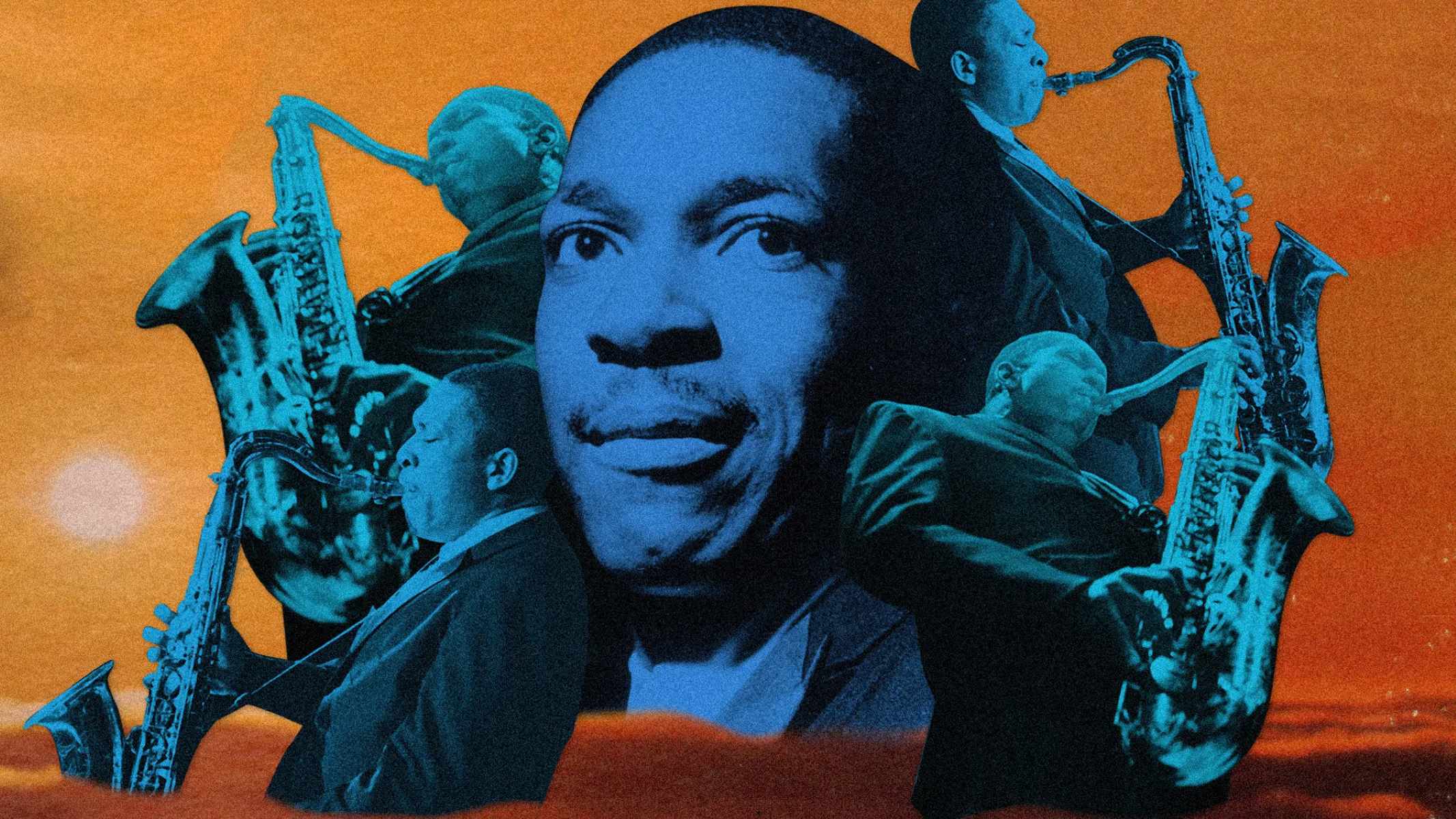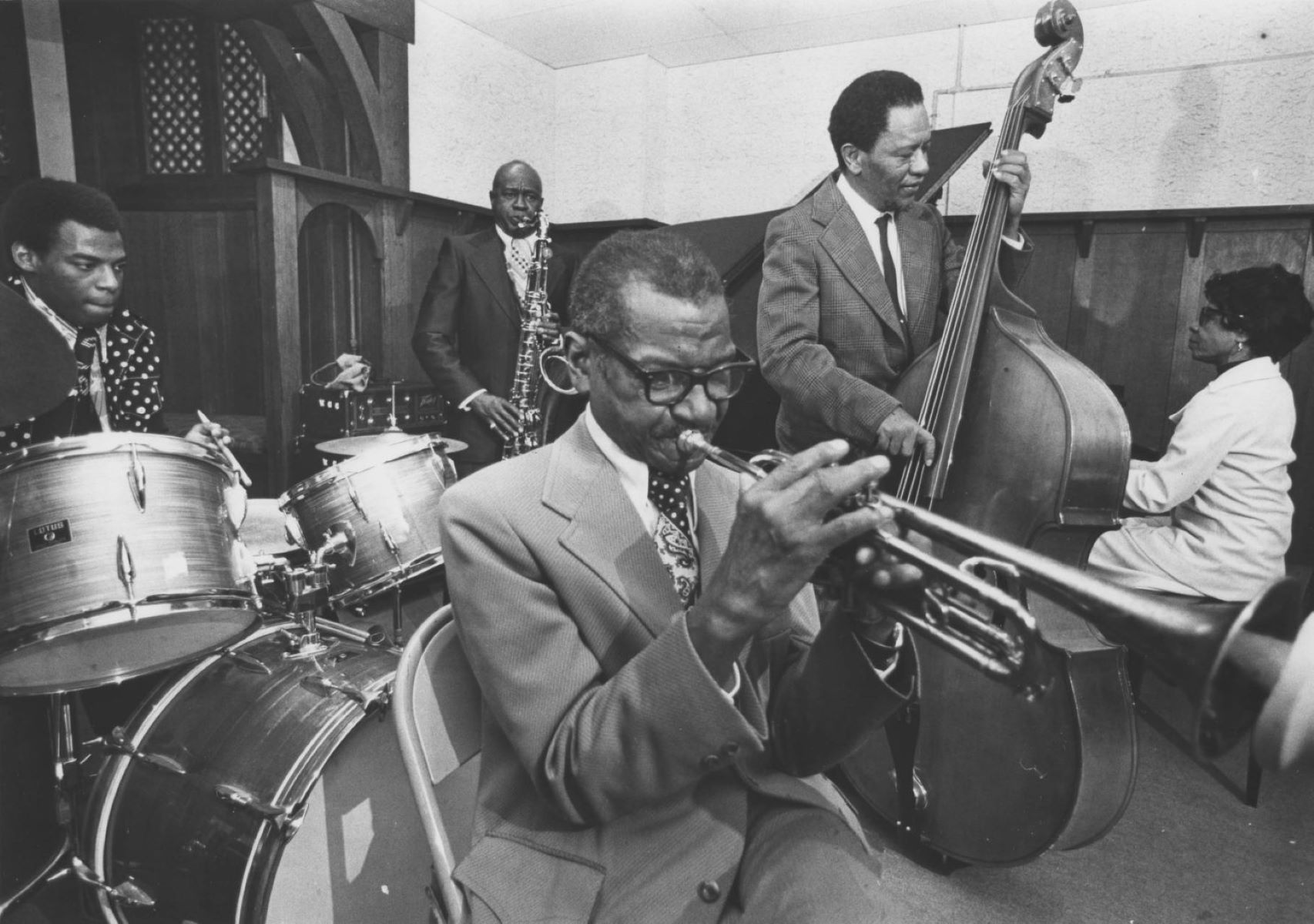

Jazz
Why Is Smooth Jazz Hated
Modified: January 22, 2024
Discover why smooth jazz is often misunderstood and disliked by some, as we delve into the reasons behind this polarizing genre. Experience the intriguing world of jazz and its diverse subgenres.
(Many of the links in this article redirect to a specific reviewed product. Your purchase of these products through affiliate links helps to generate commission for AudioLover.com, at no extra cost. Learn more)
Table of Contents
- Introduction
- The Origins of Smooth Jazz
- Characteristics of Smooth Jazz
- Criticisms and Stereotypes Surrounding Smooth Jazz
- Perception of Smooth Jazz as Background Music
- Lack of Innovation or Creativity in Smooth Jazz
- Commercialization and Mainstream Success of Smooth Jazz
- Smooth Jazz’s Influence on Other Genres
- The Appreciation and Fan Base of Smooth Jazz
- Conclusion
Introduction
Jazz, a genre characterized by improvisation, swing rhythms, and complex harmonies, has a long and rich history. From its roots in African American communities in the early 20th century to its evolution into various subgenres, jazz has captivated listeners with its emotional expression and artistic depth. One such subgenre that has gained popularity, but also sparked controversy, is smooth jazz.
Smooth jazz emerged in the 1970s as a fusion of jazz, R&B, and pop music. It is known for its mellow and soothing sound, characterized by the extensive use of saxophones, synthesizers, and a laid-back rhythm section. While initially embraced by many music enthusiasts, smooth jazz has faced its fair share of criticism and stereotyping over the years.
In this article, we will delve into the origins, characteristics, and controversies surrounding smooth jazz. We will explore the perception of smooth jazz as background music, the criticisms of its alleged lack of innovation, and its commercialization and mainstream success. Furthermore, we will delve into the influence of smooth jazz on other genres and the dedicated fan base that continues to uphold its appreciation.
Ultimately, our aim is to shed light on both the strengths and weaknesses of smooth jazz, exploring its complexities and inviting a deeper understanding of why it is both loved and hated by music enthusiasts.
The Origins of Smooth Jazz
The birth of smooth jazz can be traced back to the 1970s, a time when jazz was undergoing significant changes and branching out into new territories. Artists such as Grover Washington Jr., Bob James, and George Benson played a pivotal role in shaping the sound of smooth jazz, blending elements of jazz, R&B, and pop music.
Smooth jazz was initially seen as a more accessible and commercially appealing version of traditional jazz. It incorporated softer melodies, catchy hooks, and a smoother overall sound that appealed to a wider audience. This newfound popularity resulted in smooth jazz receiving significant airplay on radio stations and finding success on the Billboard charts.
One of the leading figures in the smooth jazz movement was saxophonist Grover Washington Jr. His 1980 album “Winelight” became a crossover hit, featuring the popular instrumental track “Just the Two of Us” with Bill Withers on vocals. This album, along with Bob James’ “Touchdown” and George Benson’s “Breezin’,” brought smooth jazz into the mainstream consciousness.
The emergence of smooth jazz was also influenced by the rise of fusion jazz in the 1970s. Fusion jazz, a genre that combined jazz with rock and funk, paved the way for experimental and genre-bending music. Artists like Miles Davis, Weather Report, and Herbie Hancock embraced this fusion sound, which in turn inspired the development of smooth jazz.
Smooth jazz not only incorporated elements from fusion jazz but also drew inspiration from the soulful sounds of R&B and the catchy hooks of pop music. This fusion of genres gave smooth jazz its distinctive and melodic sound, appealing to music lovers across different backgrounds and tastes.
Overall, the origins of smooth jazz can be attributed to a desire to make jazz more accessible and appealing to a broader audience. Its unique blend of jazz, R&B, and pop influences proved successful, leading to its rise in popularity and subsequent impact on the music industry.
Characteristics of Smooth Jazz
Smooth jazz has a distinct sound that sets it apart from other jazz subgenres. Its defining characteristics contribute to its appeal and also play a role in the criticisms it faces. Here are some key characteristics of smooth jazz:
- Mellow and Relaxing: Smooth jazz is known for its laid-back and soothing sound. Smooth melodies, soft dynamics, and gentle rhythms create a calming atmosphere and make it a popular choice for relaxation or background music.
- Saxophone and Keyboards: The saxophone is the quintessential instrument of smooth jazz, frequently taking the lead and delivering melodic solos. Keyboards, often in the form of synthesizers, add rich textures and enhance the atmospheric quality of the music.
- Rhythm Section: The rhythm section in smooth jazz typically consists of drums, bass, and guitar. The drumming is often restrained, focusing on maintaining a steady groove rather than intricate improvisation. The bass provides a solid foundation, while the guitar adds subtle embellishments and fills.
- Pop Influences: Smooth jazz incorporates elements from popular music genres, such as R&B and pop. This influence can be heard in the catchy melodies, accessible chord progressions, and occasional use of vocals in smooth jazz compositions.
- Improvisation and Soloing: While smooth jazz is often criticized for its perceived lack of improvisation compared to traditional jazz, it still allows room for instrumental solos. Soloists, particularly on saxophone, showcase their skills with melodic lines and tasteful improvisation within the framework of the song.
- Emphasis on Production Quality: Smooth jazz places a high value on production quality and polish. The use of studio effects, smooth mixing, and pristine sound engineering contribute to the overall sleek and polished aesthetic of the genre.
The combination of these characteristics gives smooth jazz its distinctive sound, combining elements of jazz, R&B, and pop into a melodic and relaxing musical experience. While it may not adhere to the traditional conventions of jazz, smooth jazz has carved out its own space and continues to be beloved by many fans around the world.
Criticisms and Stereotypes Surrounding Smooth Jazz
Despite its popularity, smooth jazz has faced its fair share of criticisms and stereotypes throughout its existence. Some of the most common criticisms include:
- Lack of Musical Complexity: One recurring criticism is that smooth jazz lacks the challenging and intricate musical elements commonly associated with traditional jazz. Critics argue that its simplified melodies, repetitive chord progressions, and limited improvisation diminish the genre’s artistic depth.
- Commercialization: Smooth jazz has been accused of being overly focused on commercial success and catering to a mainstream audience. Detractors claim that the genre prioritizes accessibility over artistic integrity, leading to a homogenized and formulaic sound.
- Background Music Label: Smooth jazz is often dismissed as “elevator music” or background music meant to be played in hotels, restaurants, or shopping malls. This perception reinforces the stereotype that it lacks substance and is devoid of emotional complexity.
- Lack of Innovation: Critics argue that smooth jazz remains stagnant and fails to push boundaries or innovate. They claim that the genre’s adherence to a specific formula and its reluctance to experiment hampers its artistic growth.
- Popularity over Authenticity: Smooth jazz has been criticized for prioritizing popular appeal over maintaining the rich traditions and authenticity of jazz. Some argue that it dilutes the essence of jazz by incorporating too many influences from other genres, sacrificing its uniqueness in the process.
- Perceived Easiness: The smooth and soothing nature of the genre has led some to dismiss smooth jazz as “easy listening” or lacking the technical and emotional challenges found in other jazz forms. This perception undermines the skill and proficiency of the musicians playing in the genre.
It is important to note that these criticisms are not universally applicable to all smooth jazz compositions or artists. There are exceptional musicians within the genre who demonstrate musical complexity, innovation, and authenticity. However, it is the commercially-oriented and formulaic aspect of some smooth jazz music that has fueled many of these criticisms and perpetuated certain stereotypes.
Despite the criticisms, smooth jazz continues to have a dedicated fan base and an undeniable impact on the musical landscape. It is essential to approach the genre with an open mind and appreciate both its strengths and weaknesses to fully grasp its significance within the broader jazz spectrum.
Perception of Smooth Jazz as Background Music
One of the prevailing stereotypes surrounding smooth jazz is its perception as background music. Many people associate smooth jazz with being played in elevators, hotels, restaurants, and other public spaces where it serves as a sonic backdrop rather than the main focus of attention.
This perception stems from the genre’s mellow and relaxing qualities, making it suitable for creating a pleasant ambiance. Smooth jazz’s smooth melodies, soothing rhythms, and lack of intense improvisation lend themselves to a calming atmosphere, making it an ideal choice for creating a comfortable and unobtrusive sonic background.
However, it is important to recognize that smooth jazz is not exclusively intended as background music. Many artists within the genre aim to create engaging and captivating compositions that are meant to be actively listened to and appreciated.
Furthermore, the association of smooth jazz with background music can often result in it being dismissed as “easy listening” or lacking artistic complexity. This perception undermines the skill and talent of the musicians who create and perform smooth jazz, as well as the potential emotional depth and musical innovation that can be found within the genre.
It is worth noting that smooth jazz’s suitability as background music should not diminish its value as a form of artistic expression. Just as classical music can be enjoyed both as a focal point of attention and as atmospheric accompaniment, smooth jazz provides a versatile and versatile listening experience that can enhance various settings and moods.
However, it is essential to recognize and respect the diverse ways in which smooth jazz can be enjoyed and appreciated. While it can indeed create a relaxing and pleasant backdrop for daily activities or social gatherings, it is equally deserving of active and attentive listening.
By challenging the stereotype of smooth jazz as solely background music, we can foster a greater understanding and appreciation of the artistic merit and unique qualities that the genre brings to the musical landscape.
Lack of Innovation or Creativity in Smooth Jazz
One of the common criticisms leveled against smooth jazz is the perception of a lack of innovation or creativity within the genre. Detractors argue that smooth jazz often adheres to a specific formula, resulting in a standardized sound that offers little variation or artistic exploration.
Smooth jazz’s emphasis on accessibility and commercial appeal has led some to perceive it as a genre that prioritizes smooth melodies, catchy hooks, and a polished production quality over pushing boundaries or taking risks. Critics contend that this focus on mainstream success can stifle musical experimentation and prevent the genre from evolving.
Furthermore, the alleged lack of improvisation in smooth jazz has been a point of contention. Traditional jazz is renowned for its spontaneous and unpredictable nature, with musicians engaging in intricate improvisation during performances. However, smooth jazz’s structured compositions and restrained improvisational elements can be seen as inhibiting the freedom and spontaneity inherent in jazz music.
While it is true that some smooth jazz compositions may adhere to a predictable structure, it is important to note that there are artists within the genre who strive to break boundaries and incorporate innovative elements. These musicians infuse their work with unexpected harmonic progressions, complex rhythms, and unique textures, challenging the notion that smooth jazz is devoid of creativity.
Additionally, smooth jazz’s fusion with other genres, such as R&B, pop, and funk, has allowed for cross-pollination and experimentation. Artists have introduced elements from these genres into their smooth jazz compositions, injecting freshness and originality into their music.
It is also essential to recognize that not all music needs to be groundbreaking or boundary-pushing to be enjoyable or artistically significant. Smooth jazz, with its melodic and accessible qualities, has its own place in the musical landscape, providing a soothing and enjoyable listening experience for many.
Ultimately, while criticisms of smooth jazz’s lack of innovation or creativity may hold some validity, it is vital to explore the entirety of the genre’s catalog to fully appreciate the diverse range of artists and compositions within it. By doing so, we can recognize the innovation and creativity that does exist and challenge the perception that smooth jazz is devoid of artistic exploration.
Commercialization and Mainstream Success of Smooth Jazz
Smooth jazz has experienced significant commercialization and mainstream success throughout its history. The genre’s accessible sound and melodic compositions have attracted a wide audience, leading to extensive radio play, chart success, and a presence in various media outlets.
One of the factors contributing to smooth jazz’s commercial appeal is its ability to blend elements from different genres such as jazz, R&B, and pop. This fusion results in a sound that resonates with listeners who may otherwise be less inclined to explore traditional jazz.
Smooth jazz’s mainstream success can also be attributed to the influence of record labels and radio stations that recognized the genre’s commercial potential. These entities played a vital role in promoting and distributing smooth jazz, ultimately popularizing the genre and introducing it to a broader audience.
Moreover, the rise of smooth jazz coincided with technological advancements that allowed for the distribution of music on a larger scale. The accessibility of CDs and later digital platforms further increased the genre’s availability and exposure, amplifying its commercial reach.
However, the commercialization of smooth jazz has not been without criticism. Some argue that the desire for mass appeal has led to a degree of homogenization within the genre, resulting in a standardized sound that lacks individuality.
Additionally, the commercial success of smooth jazz has given rise to the perception that the genre prioritizes popularity and commercial gain over artistic integrity and innovation. Critics contend that this emphasis on marketability may lead to a dilution of the genre’s authenticity and hinder its potential for pushing boundaries and exploring new sonic territory.
Despite these criticisms, the mainstream success of smooth jazz has brought the genre to a wider audience and fostered appreciation for jazz-infused music. It has also provided a platform for talented artists to showcase their skills and creativity to a larger fan base.
Ultimately, the commercialization of smooth jazz has played a significant role in shaping its trajectory and influencing its evolution as a genre. While it has faced criticism for potentially sacrificing artistic integrity, the genre’s mainstream success has undoubtedly contributed to its enduring popularity and the continued exploration of its boundaries.
Smooth Jazz’s Influence on Other Genres
Smooth jazz, with its blend of jazz, R&B, and pop elements, has had a notable influence on various other genres of music. Its unique sound and melodic sensibilities have permeated the musical landscape, contributing to the development and evolution of different styles. Here are some ways smooth jazz has influenced other genres:
- Contemporary R&B: Smooth jazz’s incorporation of R&B influences has had a significant impact on contemporary R&B music. Artists like Anita Baker, Sade, and Luther Vandross, to name a few, have drawn inspiration from the smooth jazz genre, infusing elements of its mellow sound and melodic sensibilities into their R&B compositions.
- Neo-Soul: Smooth jazz has also played a role in the emergence of the neo-soul genre. Artists such as D’Angelo and Jill Scott have incorporated elements of smooth jazz into their soulful sound, blending traditional R&B with jazz-infused harmonies and melodic structures.
- Smooth Contemporary Jazz: The success of smooth jazz has given rise to a subgenre often referred to as “smooth contemporary jazz.” This genre embraces the melodic and accessible qualities of smooth jazz while further exploring contemporary jazz elements. Artists like David Benoit, Boney James, and Dave Koz thrive within this genre, pushing the boundaries of smooth jazz while maintaining its melodic appeal.
- Smooth Fusion: Smooth jazz’s fusion with other styles has led to the development of a subgenre known as “smooth fusion.” This genre blends the improvisational nature of fusion jazz with the melodic and accessible qualities of smooth jazz, creating a unique and dynamic sound. Musicians such as Fourplay, Lee Ritenour, and Pat Metheny have contributed to the evolution of smooth fusion.
- Lounge and Chillout Music: Smooth jazz’s reputation as background and relaxation music has influenced the emergence of lounge and chillout genres. The smooth, mellow sound of smooth jazz has found a natural fit within these genres, creating a tranquil and atmospheric listening experience.
Smooth jazz’s influence on these genres demonstrates its ability to transcend boundaries and contribute to the musical landscape in significant ways. Its melodic appeal, accessible sound, and fusion with other styles have paved the way for innovative and genre-bending compositions.
While smooth jazz may have faced criticisms for its perceived lack of innovation within the genre itself, its influence on other genres serves as a testament to its lasting impact and ongoing relevance in the broader musical realm.
The Appreciation and Fan Base of Smooth Jazz
Smooth jazz, despite its critics and controversies, has cultivated a dedicated fan base and continues to be appreciated by many music lovers around the world. Its melodic, relaxing sound and soothing qualities have captivated listeners and created a community of devoted enthusiasts. Here are some reasons behind the appreciation and enduring popularity of smooth jazz:
- Relaxation and Mood Enhancing: Smooth jazz’s mellow sound and laid-back rhythms create a calming atmosphere, making it a go-to choice for relaxation and stress reduction. Many fans appreciate the genre’s ability to enhance their mood and provide a sense of tranquility.
- Accessible and Easy Listening: Smooth jazz’s melodic and accessible qualities make it appealing to a wide range of listeners. Its blend of jazz, R&B, and pop elements results in a smooth and enjoyable sound that can be appreciated by both avid jazz enthusiasts and casual music fans.
- Musical Skill and Craftsmanship: Despite criticisms alleging a lack of complexity, smooth jazz showcases the skill and musicianship of its performers. The genre features accomplished instrumentalists whose technical proficiency and tasteful improvisation continue to be admired by fans.
- Emotional Connection and Nostalgia: Smooth jazz often evokes a sense of nostalgia and emotional connection for listeners. The familiar melodies and warm tones can transport individuals to fond memories and evoke feelings of comfort and familiarity.
- Live Performances and Festivals: Smooth jazz concerts and festivals provide fans with opportunities to see their favorite artists perform live. These events create a sense of community among fans, fostering a shared appreciation for the genre and allowing for memorable and immersive musical experiences.
- Continued Innovation and Evolution: While critics argue against the genre’s lack of innovation, smooth jazz has, in fact, evolved over time. Many artists within the genre have pushed boundaries, incorporated new influences, and experimented with different sounds and styles. This ongoing evolution ensures that smooth jazz remains fresh and engaging for its fan base.
The fan base of smooth jazz spans across generations, demonstrating the genre’s enduring appeal. From longtime fans who have followed the genre since its inception to younger listeners discovering its melodic sound, smooth jazz continues to find new appreciators.
Ultimately, the appreciation for smooth jazz lies in its ability to provide a melodic escape, evoke emotions, and create a sense of community among its dedicated fan base. It is a genre that has left an indelible mark on the musical landscape and continues to resonate with listeners who seek its soothing and accessible qualities.
Conclusion
Smooth jazz, with its fusion of jazz, R&B, and pop influences, has both captivated and polarized music enthusiasts since its emergence in the 1970s. While facing criticisms for its perceived lack of complexity, commercialization, and association with background music, smooth jazz continues to hold a special place in the hearts of many listeners.
Throughout its history, smooth jazz has showcased its melodic appeal, relaxing qualities, and ability to create a calming atmosphere. Its accessibility and blend of genres have allowed it to reach a wide audience, drawing in both jazz enthusiasts and casual listeners who appreciate its easy listening sound.
While some argue against the genre’s lack of innovation, smooth jazz has demonstrated its evolution and ability to push boundaries. Artists within the genre have infused their music with new influences, experimented with different styles, and continued to showcase their skill and craftsmanship.
Smooth jazz’s influence can also be seen in other genres, including contemporary R&B, neo-soul, and smooth fusion. Its melodic sensibilities and fusion of styles have inspired musicians to incorporate elements of smooth jazz into their own compositions, further expanding the reach and impact of the genre.
Despite the criticisms and stereotypes surrounding smooth jazz, it continues to cultivate a devoted fan base that appreciates its relaxation, mood-enhancing qualities, and emotional connection. The live performances, festivals, and sense of community created around smooth jazz further solidify its place in the hearts of its fans.
In conclusion, smooth jazz has left an indelible mark on the musical landscape. While it may not adhere to traditional jazz conventions and has faced its fair share of controversies, smooth jazz’s melodic sound, accessibility, and ability to evoke emotions have earned it a dedicated following. Its influence on other genres and ongoing evolution demonstrate its lasting impact. Smooth jazz remains a beloved genre, inviting listeners to sit back, unwind, and journey through its captivating and melodic soundscapes.











